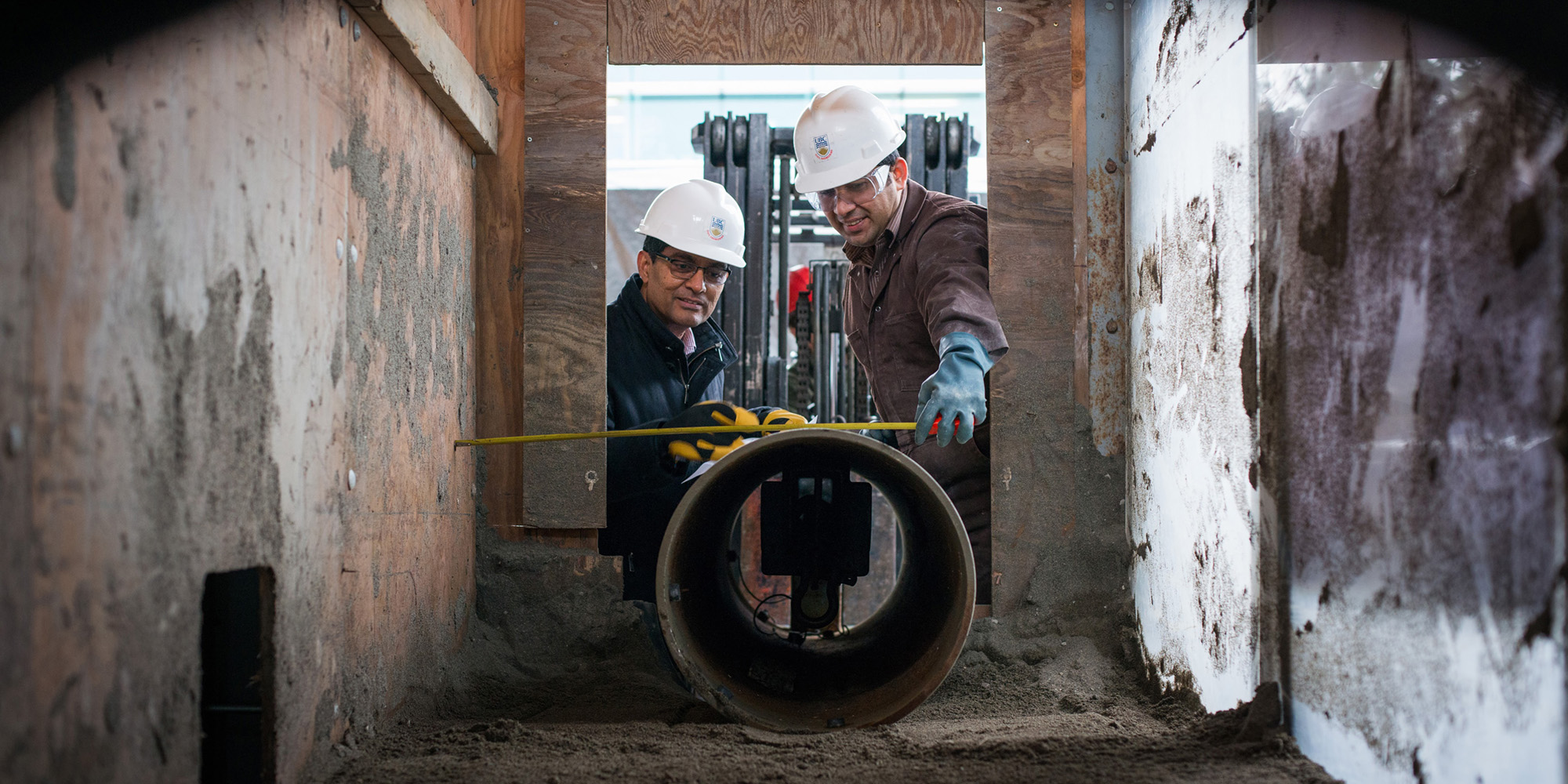Leading Consulting Civil Engineering Companies for Framework Projects
Leading Consulting Civil Engineering Companies for Framework Projects
Blog Article
Just How Consulting Engineers Enhance Geotechnical Design Projects: Insights Into Their Know-how, Techniques, and Collaborative Approaches
Consulting engineers are essential in boosting geotechnical design tasks, using their specialized understanding to navigate the intricacies of subsurface problems. Their joint approaches foster interaction amongst diverse task stakeholders, eventually forming the job's trajectory.
Duty of Consulting Engineers
The experience of seeking advice from engineers in geotechnical design is essential to the effective implementation of building tasks. These professionals play a crucial duty in evaluating soil and rock homes, which are vital variables affecting design and construction choices. By carrying out complete site investigations, speaking with engineers collect vital information that educates the layout procedure, ensuring tasks are developed on secure and suitable ground.
Consulting engineers additionally give vital understandings right into threat administration (geotechnical geologist). They identify potential geotechnical risks, such as landslides, dirt liquefaction, and negotiation concerns, enabling stakeholders to apply efficient reduction methods. Their know-how help in enhancing foundation styles, which can bring about considerable expense financial savings and boosted safety
In addition, speaking with designers offer as a vital link between task proprietors, engineers, and professionals. Their capacity to convert intricate geotechnical data right into workable referrals fosters cooperation and assists in educated decision-making throughout the task lifecycle. This multidisciplinary strategy not just improves task effectiveness but also ensures conformity with governing standards and ideal techniques.
Key Approaches in Geotechnical Engineering

One main methodology is site investigation, which includes carrying out area examinations and lab analyses to gather data on subsurface problems. Techniques such as Requirement Penetration Screening (SPT) and Cone Infiltration Screening (CPT) are widely utilized to review soil stratigraphy and strength. Additionally, geophysical methods, consisting of seismic and electric resistivity studies, provide non-invasive ways to examine subsurface qualities.
One more vital technique is numerical modeling, which allows engineers to mimic different circumstances and anticipate exactly how soil-structure communications will certainly behave under various loading problems. Finite Element Evaluation (FEA) is a common approach utilized in this context.
Moreover, the style of structures, preserving frameworks, and earthworks depends greatly on these techniques - geotechnical geologist. By integrating advanced logical devices with field information, speaking with designers can establish customized remedies that deal with particular task difficulties, inevitably adding to the security and safety and security of building and construction jobs
Relevance of Soil Analysis
Dirt analysis offers as a foundational element in geotechnical design, supplying crucial understandings right into the physical and chemical residential properties of dirt essential for effective building preparation. Recognizing dirt attributes is critical for determining its load-bearing ability, drainage actions, and capacity for negotiation or instability. Thorough dirt examinations, including tasting and laboratory testing, aid recognize specifications such click to investigate as soil kind, moisture content, thickness, and shear stamina.
These analyses inform the option of proper construction techniques and materials, ultimately affecting task security and durability. For example, cohesive dirts may require different structure layouts compared to granular soils, necessitating tailored design services. Additionally, dirt analysis aids in recognizing impurities that could pose risks to human wellness or the environment, permitting the advancement of reduction techniques.
Incorporating dirt analysis right into the onset of project growth assists to lessen unpredicted difficulties, making sure that engineers can prepare for and address potential problems prior to they rise. By establishing a thorough understanding of the website conditions, getting in touch with designers can optimize style efficiency and lower prices, thus boosting the overall success of geotechnical design jobs.
Joint Approaches in Jobs
Successful geotechnical projects commonly rest on joint methods that bring with each other varied expertise from different disciplines. Reliable cooperation amongst speaking with designers, geologists, environmental scientists, and construction experts is critical for addressing complicated difficulties and maximizing task end results. By leveraging the unique abilities and knowledge of each employee, tasks can benefit from a holistic understanding of the site problems, regulative demands, and design restraints.
Regular communication and interdisciplinary conferences promote the sharing of insights and cultivate a society of synergy. These collective initiatives enable the recognition of possible dangers early in the project lifecycle, enabling prompt mitigation techniques. Furthermore, incorporating feedback from stakeholders, consisting of neighborhood communities and governing companies, guarantees that all viewpoints are thought about, boosting job go to my site acceptance and compliance.
Additionally, the combination of sophisticated technologies, such as Geographic Details Equipment (GIS) and Structure Details Modeling (BIM), more enhances cooperation. These devices enable the real-time sharing of data and visualization of geotechnical conditions, advertising informed decision-making. Ultimately, a joint approach not only enhances task execution but additionally lays the foundation for cutting-edge remedies to intricate geotechnical design difficulties.
Impact on Task Outcomes

Consulting engineers use advanced methodologies such as danger evaluation and predictive modeling, which boost the precision of project forecasts. Their ability to incorporate cutting-edge technologies, like geotechnical instrumentation and information analytics, additionally refines the style and building processes. Consequently, jobs experience improved effectiveness, decreased prices, and minimized hold-ups.
In addition, cultivating effective communication and collaboration amongst team members boosts analytical abilities. When click for more challenges develop, an unified front enables swift identification of options, stopping potential setbacks. Eventually, the collective initiatives of getting in touch with designers contribute to better outcomes, making sure that jobs meet both regulative standards and client assumptions.
Conclusion

Report this page